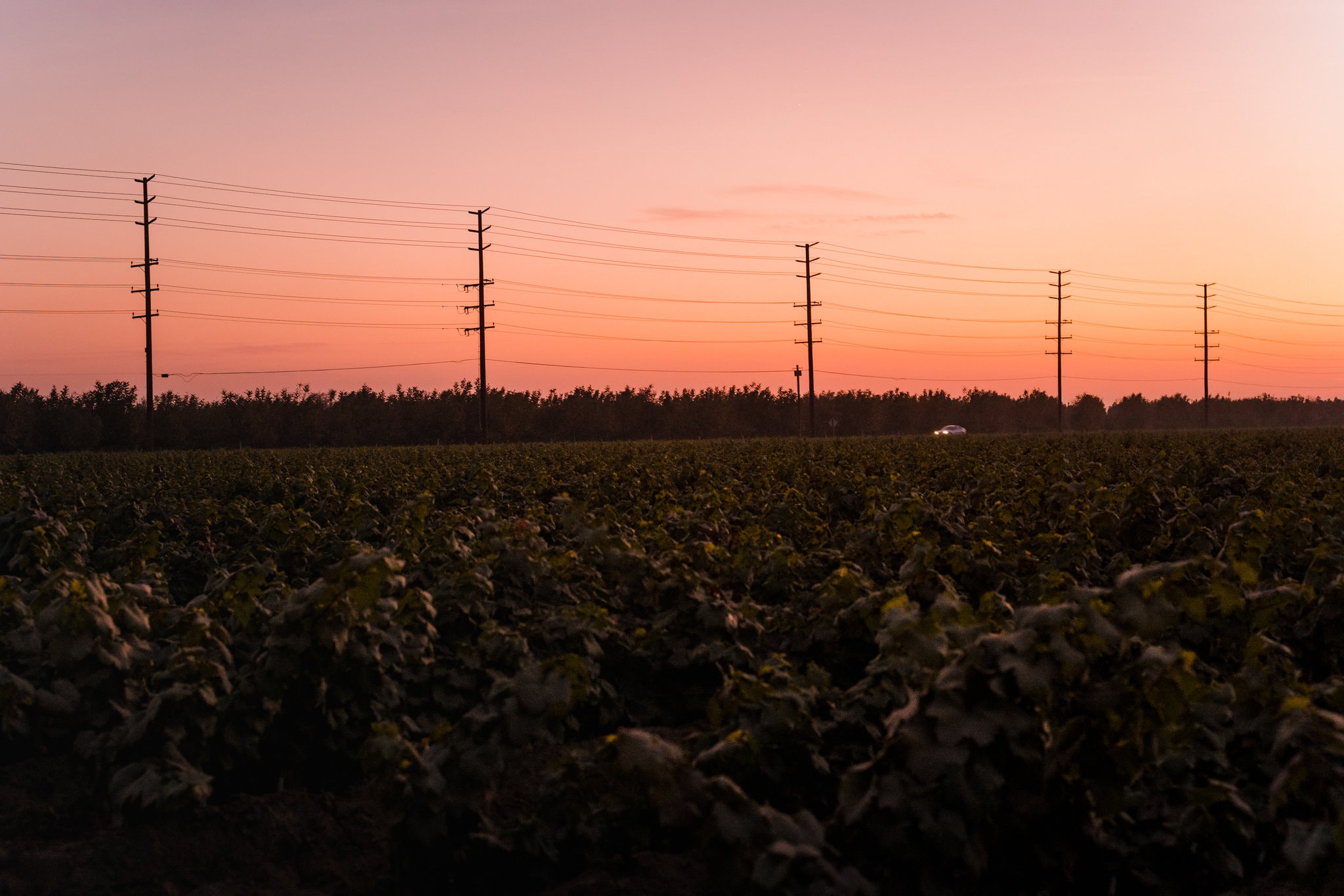For Students at a Lone School in California, Class Is Still On
Out of the 10,521 public schools in California, Outside Creek is the only one with its doors open.

Tulare County, Calif., is largely rural, and many students who attend Outside Creek Elementary do not have internet access at home. Ryan Christopher Jones for The New York Times
By Brian Wollitz and
It was humdrum normalcy in the most abnormal of times, as if there were no pandemic, no statewide order to shelter in place, no social-distancing directives.
Of the 10,521 public schools in California, Outside Creek is the lone holdout, a tiny school in a remote rural community in the San Joaquin Valley that is insisting on holding classes for the 21 students from kindergarten through eighth grade who showed up last week.
Mr. Bravo, who is also the school’s superintendent and eighth-grade teacher, said he and the school board did not make the decision lightly. Yes, local health authorities had urged all schools to close, and every other school in Tulare County had done just that after Gov. Gavin Newsom issued a shelter-in-place order for the entire state on March 19. They also knew the numbers — 10 dead so far out of at least 187 residents in the county who have tested positive for the coronavirus.
But when Mr. Bravo turned to the Centers for Disease Control and Prevention for advice, the nation’s leading authority on infectious diseases seemed to suggest in its written guidance that small schools outside hot spots could remain open if they took precautions. And then Mr. Bravo thought about the everyday struggles of the families who work the citrus and walnut groves here. Nearly every one of his students qualifies for free or subsidized lunches, and remote learning is a fantasy for the many families who cannot afford internet access.
“We thought about just our rural area and the resources available for our kids,” Mr. Bravo said.
As the spread of the novel coronavirus accelerates across the United States, Outside Creek illustrates the challenge of enforcing uniform social-distancing policies in a country that prizes local control over schools.
Under California law, only one official other than Mr. Bravo has the power to close Outside Creek — the governor. Mr. Newsom has repeatedly called on every school in the state to remain closed for the rest of the academic year. His shelter-in-place order is also unequivocal: “Everyone in California is required to stay home except to get food, care for a relative or friend, get necessary health care, or go to an essential job,” it reads.
Outside Creek may be the only school, not just the only public school, still open in California; representatives of the state’s 3,315 private schools said they knew of no private school that has defied Mr. Newsom’s order.
Yet Mr. Newsom, well aware of Tulare County’s conservative politics, has refrained from confronting Outside Creek. His spokesman would say only this: “School officials should use guidance from federal, state and local public officials in deciding how best to serve students.”
Karen Elliott, the county’s public health director, has stressed that it is best for parents to keep their children home. Three-quarters of Outside Creek’s parents have decided to do just that, with their children taking independent study courses devised by Mr. Bravo’s staff.
The situation in Outside Creek is exceptionally rare not only for California, but also nationwide. Every state has ordered or recommended school closures. While some religious schools initially dragged their feet, the overwhelming majority of the nation’s schools are now shuttered. Even in states that strongly advised schools to close without a formal mandate, like Kentucky and South Dakota, state education departments said on Tuesday that they were unaware of any open public schools.
Outside Creek, the oldest school in Tulare County (it opened during the Civil War), consists of two small buildings surrounded by rows of walnut trees. College pennants hang in the cafeteria, each signifying where a graduate landed. Just about everyone associated with the school proudly calls themselves Swamp Rats, a name inspired by a former football coach who told his players they needed to be as tough as those creatures. The moniker stuck, and the school even voted to change its mascot from the Eagles.
“It’s more than just a school,” said one Swamp Rat parent, Sylvia Gomez. Mrs. Gomez said that while her family is “one of the lucky ones” with a home computer, she decided against keeping her daughter home. “I send her because education is more important than anything in the world.”
Ben Orozco, a dispatcher at a trucking company, said his wife’s family had sent generations of their children to Outside Creek. He said the area was used to hardship and bad breaks. “At the end of the day, I feel like we have a higher percentage to get in an accident and die than get the coronavirus,” he said before he dropped off his 10-year-old daughter, Belynda. “If we decide to keep our kid in school,” he added, “that’s our decision as a parent, nobody else’s.”
Swamp Rat parents have also asked why Outside Creek Elementary should close when day care centers, which are exempt from the state’s shelter-in-place orders, are still open all over town. “There’s day cares open with more children,” said one parent, Marylu Cuevas, who would have continued sending her children to school if not for the fact that a hospice care worker lives with them.
For his part, Mr. Bravo, the superintendent, does not dispute the dangers of this virus. Door handles at Outside Creek are disinfected constantly. Students sanitize their desks. Tape is stuck on the cafeteria floor at six-foot intervals to space out the lunch line. But social distancing is easier said than done in elementary school. On a recent day, children converged into tangled clusters as they played ball on the playground.
Tony Thurmond, California’s superintendent for public instruction, has urged Mr. Bravo to reconsider his decision and fall in line. “Quite frankly,” he said at a news conference, “none of us knows when it’s safe enough for our students to return to campus.”
But then there have been voices like Devin Nunes, the Republican congressman whose district includes Outside Creek. On Fox News last week, Mr. Nunes criticized the push to close California’s schools. “Way overkill,” he called it.
Last week, Mr. Bravo gave three eighth-grade students a grammar lesson on modifiers. The students were careful to spread out, and Mr. Bravo, a trim man with close-cropped black hair and a five o’clock shadow, paced the room past the posters of the U.S. Constitution and the periodic table, past the fish tank where students are studying trout eggs, offering help and encouragement.
“It keeps me going when I see those three students every day for whatever reason that they’re here,” Mr. Bravo said.
Outside Creek is now closed for spring break. Students are due back on Tuesday, but Mr. Bravo said he was considering extending the break by a week. Then, he hopes, school will resume.
Dana Goldstein contributed reporting from New York.
Brian Wollitz and Ali DeFazio are students at the University of California, Berkeley, Graduate School of Journalism. The New York Times is collaborating with the school on coverage of the coronavirus in California.



